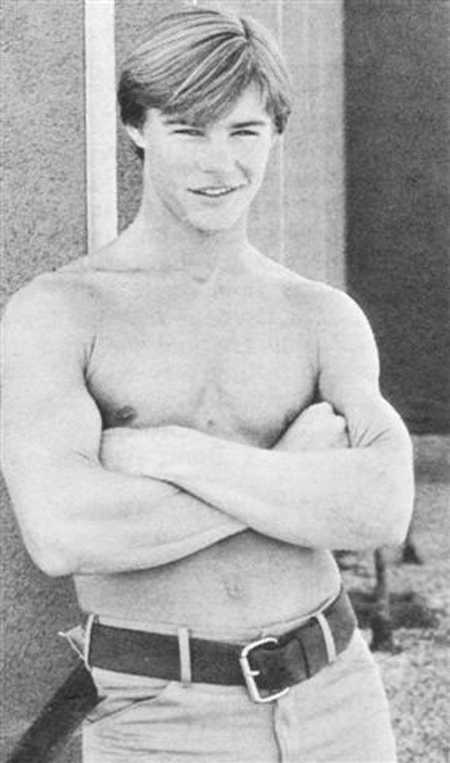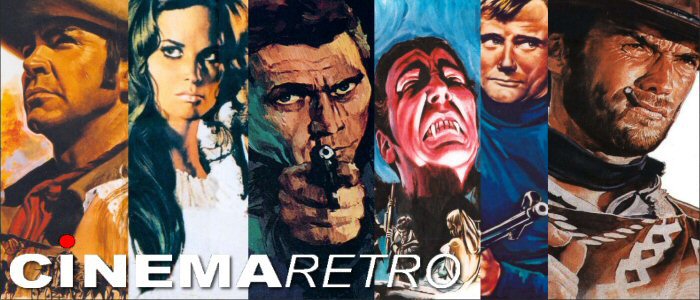
BY DAVID GROVE
Why do you want to do a book on Jan-Michael
Vincent?
This is the most common question I received
during the writing of Jan-Michael Vincent:
Edge of Greatness, my book on the
career and life of Jan-Michael Vincent. Jan’s former Hollywood colleagues, most of whom now refer to him in the
past tense, asked me this, and so did Jan’s classmates and friends from
Hanford, California, where Jan was born and raised.
I’ve always been fascinated by unfulfilled
potential, and the tragedy this represents, and I see Jan as the embodiment of
this. Although Jan, as an actor,
possessed all of the ingredients, on a purely physical level, for superstardom,
there was something missing, something very wrong, and I wanted to explore this.
I called the book Edge of Greatness, which suggests great potential but also the
existence of a precipice bordered by the arbitrary forces of fate and
circumstance. Obviously, Jan’s story
turned out very badly, and although there is no clear explanation for the
source of Jan’s lifelong sense of confusion, his eternal torment, I found some
disturbing clues.
Jan’s hallmark as an actor, at the height
of his career in the early to mid-1970s, was his physical beauty, his
incredible well of vitality, which disguised the characteristics and
personality of a lifelong misfit, an identity that carried destructive
implications for Jan in his career and life. He was cursed with natural ability, in terms
of his screen presence, and with surfing, his one true passion. He got by on this, his god-given gifts, for a
very long time. When this evaporated, turned
inward on him, there was nothing left.
Jan’s alcoholism, which is the bedrock of
not only his downfall but his life, was rooted in his family. It was passed down to him through his
grandfather, Herbert Vincent, and Jan’s father, Lloyd, a World War II veteran
who owned a sign painting business in Hanford, Jan’s hometown. However, it must be pointed out that Jan’s
brother and sister both avoided this fate. “Jan was a born alcoholic from an alcoholic family,†says Bonnie Hearn
Hill, Jan’s classmate at Hanford High, the high school Jan attended between
1959 and 1963. “He would’ve been an
alcoholic had he ended up a sign painter in Hanford. He probably wouldn’t have had access to all
of the drugs.â€
Jan wanted to be a surfer. After graduating from Hanford High in 1963,
at the age of nineteen, he enrolled at Ventura College, far away from
Hanford. In early 1965, Jan abruptly
dropped out and went to Mexico in pursuit of a surfing odyssey, which was
halted due to Jan’s draft status. In
1966, after completing basic training, Jan had few prospects. Acting, as a possible career, was a last
resort for Jan, and he really had no choice.
Through his father’s connections, Jan made
the acquaintance of legendary talent agent Richard “Dick†Clayton, who
immediately saw in Jan, purely visually, the heir apparent to James Dean,
Clayton’s friend and former client. Clayton,
following the Rock Hudson model, specialized in identifying good-looking boys,
hunks, and developing them into stars, whether they had talent or not. Clayton’s stable included Harrison Ford and
Nick Nolte, whom Clayton discarded in favor of Jan.
The only acting training Jan received in
his career was at Universal Studios, in the training program, which he entered
in the summer of 1966. Jan was a
natural. The camera loved him, and he
had an instinctive sense of the camera, and he understood how to seize the
crucial moment within a given scene. “Jan
was a “stand and deliver†type of actor,†says Robert Englund, Jan’s friend and
co-star in the film Buster and Billie. “He could, in those short bursts, dominate
the scene he was in, and he was very effective. Jan was about five ten, which was the perfect height in terms of him
relating to the camera. He had
everything going for him.â€
Following the Rock Hudson model, Jan was
marketed, beginning in the late 1960s and continuing well into the 1970s, as a
male model. He was a teen idol, a
luridly-developed persona that followed him into the early thirties, when he
was a husband and father.
Jan’s first acting role, which Jan received
outside of the Universal bubble, was a supporting part in the western feature The Bandits, which starred Robert
Conrad, who urged Jan to abandon his chosen screen name, Jan Vincent, in favor
of a more manly-sounding name. He became
Michael Vincent, Mike, employing the middle name he’d barely invoked in
Hanford, a moniker he kept until he appeared in the TV production Tribes, the first film Jan was proud
of.
Conrad was the first in a parade of iconic
leading men Jan found himself paired with between the late 1960s and late 1970s. Conrad was followed by John Wayne and Rock
Hudson in The Undefeated, Darren
McGavin in Tribes, Robert Mitchum in Going Home, Charles Bronson in The Mechanic, Gene Hackman in Bite the Bullet, and Burt Reynolds in Hooper.
As a leading man, Jan found his greatest
success, critically and commercially, between 1972 and 1975, with the films Buster and Billie, The Mechanic, The World’s Greatest Athlete, and White Line Fever, a film that was most notable, in spite of its success,
because it represented Jan’s introduction to cocaine, which he was turned onto
by a stuntman. None of these films were
gigantic box office hits, but they were successful and promoted the idea that
Jan was going to become a major star. “Jan was at the beginning of the process of being groomed for stardom
when I met him,†recalls White Line Fever’s
director, Jonathan Kaplan. “He was being
groomed by Peter Guber at Columbia Pictures, which distributed White Line Fever, and Peter told me that
he was convinced that Jan was going to become a major star.â€

Jan’s inability to attain major film stardom throughout the 1970s owed more to fate and circumstance, and bad choices, than the influence of his personal demons, which his body, with its amazing regenerative powers, miraculously kept at bay until he reached his forties. “I think he had bad management,†says Kaplan. “He chose film projects for the wrong reasons—he did films for the money, instead of focusing on the elements involved—the director and the script.â€
Jan reinvented himself, or was reinvented, as a television star in the early 1980s, beginning with his acclaimed performance in the epic miniseries The Winds of War. This was followed by Airwolf, the television series Jan starred in from 1984 to 1986, a period that marked the end of his mainstream Hollywood career.
It was the timing of Jan’s ultimate collapse, in his early forties, that intrigued me more than anything else. Now I realize how amazing it is that he lasted this long. “I confronted Jan on Airwolf, about his problems,†says Donald P. Bellisario, Airwolf’s creator. “I said, ‘Jan, you’ve got everything going for you, so why do you want to destroy yourself. He said, ‘I’m a drunk. I’ve always been a drunk, and that all I want to be.’â€
As Cinema Retro readers understand, and pay tribute to, more than anyone else, there is a sad poignancy in contemplating the careers, and the eventual fate, of those performers who were touched with greatness but were denied this status, denied the recognition and stardom they deserved, largely due to forces that were out of their control. Sometimes this feeling is inherent in a single unforgettable performance. Joan Goodfellow, who gave such a wonderful performance alongside Jan in the film Buster and Billie, is such an example. While Jan, whose performance in Buster and Billie is among his best, received the full Hollywood treatment throughout the 1970s, Goodfellow was doomed to obscurity. She eventually retired from acting and became a secretary. There’s nothing fair about this.
Jan has no one to blame, except maybe God, who implanted rare, special gifts in Jan, without a shred of desire to go with them.
My most lasting thought of Jan, when considering the totality of his career and life, is that beneath his once shiny exterior, he belongs in that familiar, gloomy category of people who are simply not meant to find happiness, peace, in this world. This was his destiny.
In the end, he did it his way.
Jan-Michael Vincent: Edge of Greatness is published by BearManor Media.
CLICK HERE TO ORDER FROM AMAZON.
